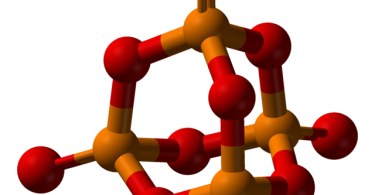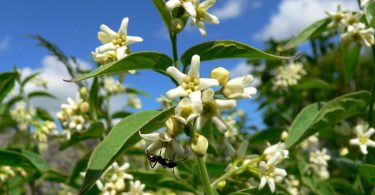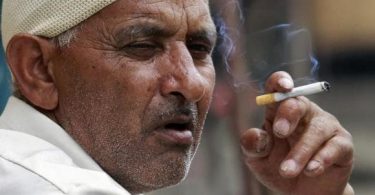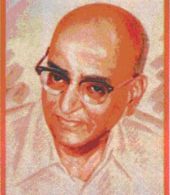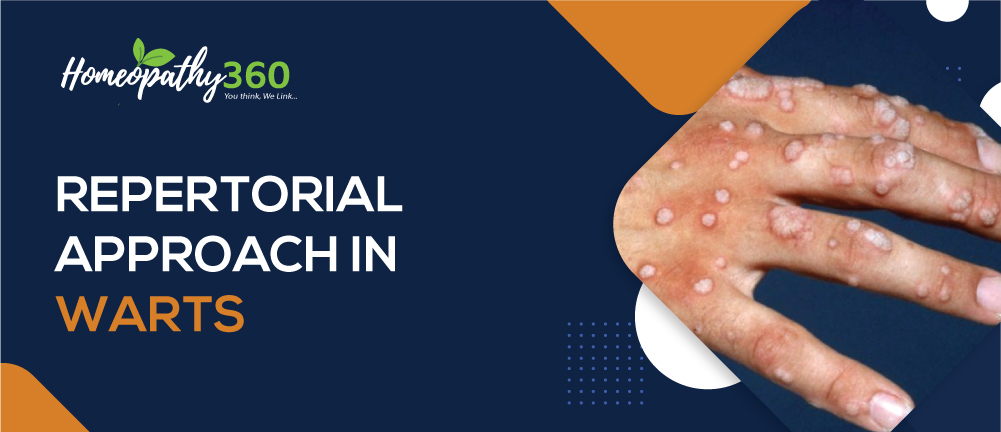
ABSTRACT
This article is an attempt made to explain Warts in detail and the reportorial approach using Kents repertory, Boenninghausen’s Therapeutic Pocket Book and Boger Boenninghausen’s Characteristic Repertory and high graded medicines.
INTRODUCTION
Warts are benign lesions caused by Human Papilloma Virus [HPV] that occur in the mucosa and skin. Warts are common worldwide and effect approximately 10% of the population, Warts can occur at any age and they are more common among immunosuppressed patients.
DEFINITION1
Verrucae or warts are epidermal growths resulting from infection of the skin with a filtered DNA virus called the Human Papilloma Virus (HPV).
They are auto inoculable and contagious. They can affect any part of the body. The type of wart is dependent on the anatomical site and age of the individual.
EPIDEMOLOGY2
- Frequency – common worldwide and affect approximately 10% population
In school aged children the prevalence is as high as 10-20%
More common among immunosuppressed patient.
- Age -can occur at any age, prevalence increases among children at 12-16 years.
- Race- warts are twice common in whites as in blacks or Asians
- Sex- male to female ratio is approximately equal.
ETIOLOGY 2
- There are over 100 subtypes of HPV but only a few types can cause skin warts at selective anatomical sites.
- Common warts are associated with HPV Types 2,4 [most common] followed by the types 1,3,27,29 and 57.
- Flat warts are caused by the types 3, 10, 28.
- Deep palmoplantar warts are associated by types 1[most common] followed by types 2, 3,4,27,29 and 57.
- Cystic warts are caused by type 60.
- Anogenital warts are associated with types 6 and 22.
TYPES 3
- Verruca plana
- Verruca vulgaris
- Filiform warts
- Palmar warts and plantar warts
- Genital warts
- Occupational warts
- Verruca plana – commonly seen in children usually on the back of the hands or on face.
Characteristic features -They are smooth, small, flat topped papules of skin colour.
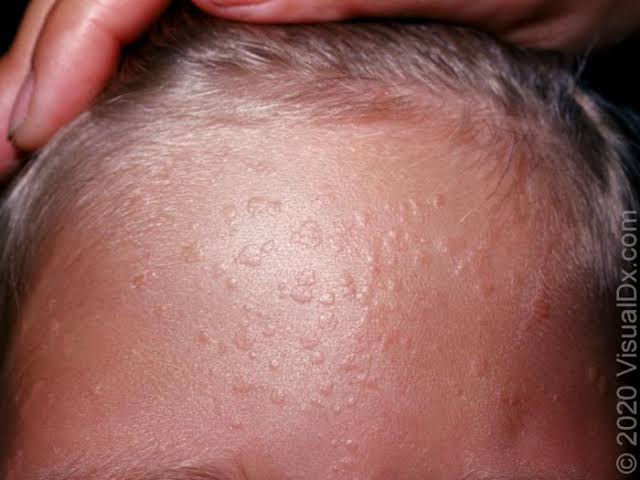
- Verruca vulgaris [common warts] – These affect any part of the body especially the hands and feet, varying in size from pinhead to pea size.
Features- The surface is rough and hyperkeratotic. They are firm in consistency and non tender.
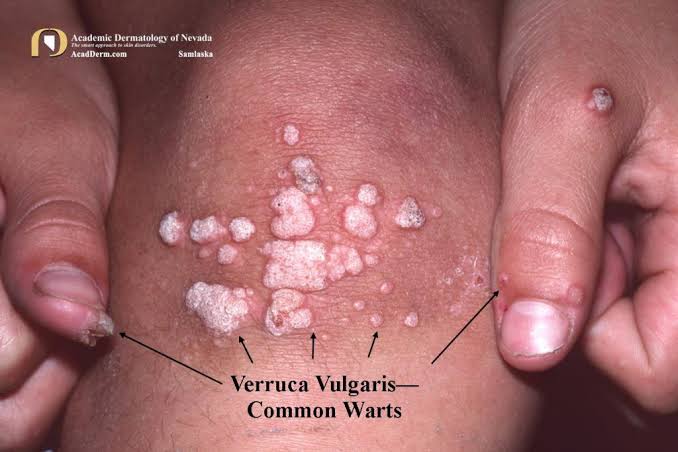
- Filiform warts – These are finger-like growths, slender and thin found on the face and neck.
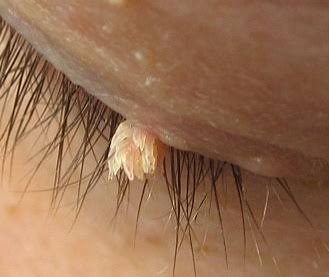
- Verruca plantaris [Plantar warts] and palmar warts – These occur on the palms and soles of the feet.
Description -They are flat due to pressure, but are deep in the skin. They are painful and tender, occur on sites of pressure like the balls of feet and heels.
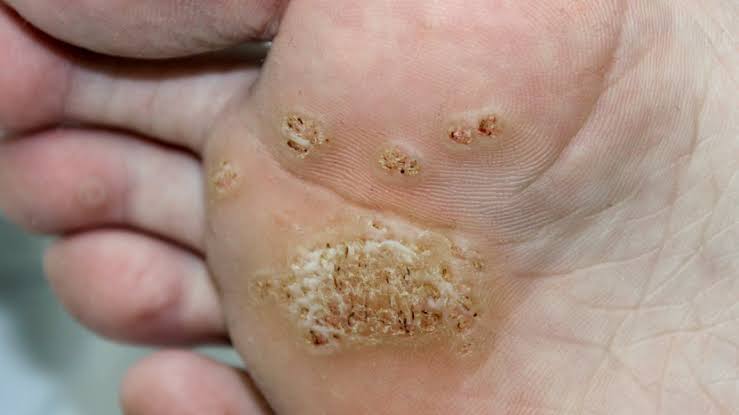
- Genital warts (Condylomata acuminata) – commonly seen in Sexually active adults of either sex. Description – Single or multiple white, pink, moist or slightly hyperpigmented hypertrophic warts which resembles a cauliflower. Early lesions may be flat. Location – Anogenital region – Penile, vaginal or rectal mucosa may be involved.
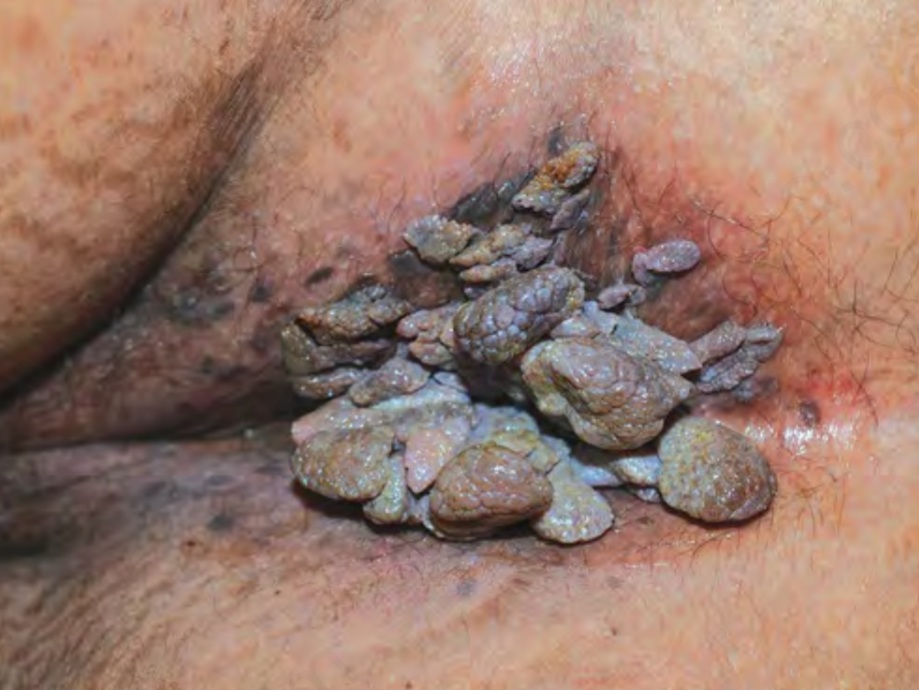
- Occupational warts are common wart-like papillomatous and/or dome-shaped, deep
warts with a smooth surface located on both dorsal and palmar sides of the hands. They occur in butchers and fish handlers.
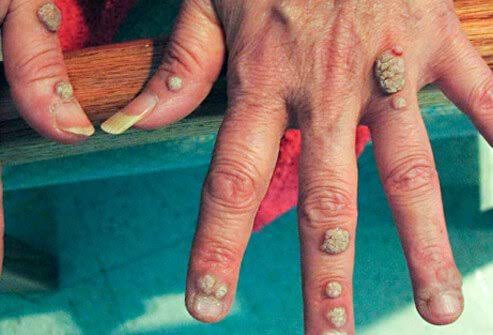
DIAGNOSIS 2
- Clinical examination
- Skin biopsy to rule out malignancy.
ALLOPATHIC MANAGEMENT 2
- Chemical cautery
- Cryotherapy
- Electrocauterization
- Laser surgery
- Keratolytic agents -salicylic acid [10-20%]
- Formalin [2-3%] soaks in water for 15minutes for plantar warts.
ALREADY DONE STUDIES ON WARTS IN HOMEOPATHY
1.A study in 200 cases ‘healing of skin warts with ultradiluted homoeopathic medicicine’ was conducted in west Bengal , India in which a total of 200 patients were enrolled in the study with permission from institutional ethical committee. A control group of 10 patients were also included where only vehicle of the medicine was given [ethanol] thus 210 patients were involved and the homoeopathic medicines used in this study were [Thuja, Dulcamera, Natrum muraticum]which was administered orally has shown 88 % remission in cases within a month and complete remission of warts was seen by three months.4
2.In an article titled ‘Case studies for the treatment of Warts with Homoeopathy’ by MD Ismail shaikh. In this study five case series were presented in which the medicine for each case had been selected after taking the detailed case history, performing analysis and evaluation of symptoms, constructing totality of symptom and Repertorization was done using Kents repertory and this study reported that Homeopathic medicines which were prescribed on the basis of Individualization were successful in treating the Warts either by removal or by dissolution of the warts and also gives relief of associated symptoms of the patients as well. 5
3.In an article titled ‘Four cases of Warts treated by Individualized Homeopathic medicine- A clinical Case study’ by Bikash Biswas, Poulamy Singha Roy, Sanjukta Mandal, Puja Roy at West Bengal, India, presented four case studies which were treated within six months of duration in which each case was prescribed Individual Homoeopathic medicine on the basis of totality of symptoms and Repertorization. The remedies used were Hepar sulph, Arsenic album, and 2 cases were treated with Natrum muraticum.6
4. In an Evidence based Case Report titled ‘A co-morbid condition of Warts and Vitiligo treated with Individualised Homoeopathic medicines’ Presented a case report which had shown a marked improvement of Vitiligo along with the disappearance of Warts as evidenced photographically. In this study Sepia officinalis was prescribed based on Individualization and the non invasive methods -ORIDL[ Outcome Related to Impact on Daily Living], VASI [Vitiligo Area and Scorring Index ], were used to assess treatment progress.7
REPERTORIAL APPROACH WITH HIGH GRADED MEDICINES FOR WARTS IN VARIOUS REPERTORIES.
Boenninghausen’s Therapeutic Pocket Book is the first ever repertory to be published in the history of homoeopathy. It is based on the principles of Inductive reasoning whose essence of repertorization is generalisation or proceeding from particlulars to generals and the symptoms are classified according to elements of the symptoms i.e Location, Sensation, Modalities and Concomitant.
Kents Repertory is constructed on the basis of deductive logic and the school of philosophy gives primary importance to the person has a whole therefore in this repertory general symptoms are given highest importance followed by the particular symptoms.
In kents repertory and BBCR the rubrics related to ‘warts’ are given in different chapters with respect to different parts of the body.
Boger Boenninghausen’s Characteristics and Repertory by C M Boger, operates on the basis of Complete symptom, Concomitants and Pathological generals.
In BTPB the Rubric warts is given in the section SENSATIONS AND COMPLAINTS-SKIN-warts
KENTS REPERTORY it is given under the chapter SKIN-warts.
In BBCR it is given in the chapter SKIN AND EXTERIOR BODY-warts.
BTPB 8
Warts in general : BELL, CAL-C, CAUST, DULC, NIT-AC, SUL, THUJ.
Bleeding : Nit.ac , Cinnab.
Burning : Rhus, Petrol, Ars, Sep.
Hard : Sul, Dul, Ran.b.
Horny : Sul, Ran.b .
Intended : Phos.ac ,Lyc, Nit.ac, Staph.
Inflamed : Cal.c ,Hep,Sil, Am.carb, Caust , Lyc, Nit ac, Sep ,Sul.
Large :Dul , Nat .c, Nit ac ,Caust .
Pedunculated: Thuj , Staph , Dulc , Lyco.
Smooth :Dulc
Small : Cal.c , Sars, Sul, Dulc.
Stinging : Cal.c, Nit.ac, Ant.cr, Hep, Lyc, Sul ,Sep .
Suppurating :Caust, Hep, Ars, Cal.c, Thuj.
Throbbing : Cal.c, Sil , Sul, Lyc , Petrol.
Surrounded by a circle of ulcers: Nat.c, Ars .
Withered : CHIN, SEC.C ,Fer, iod, Merc, Phos ac, Sars, Verat.a.
KENTS REPERTORY9
Warts [see excrescences]: Bar-c , Bell, Calc, Cal-s, Caust, Merc-c, Nat-s, Nit-ac, Sulph, Thuj.
Bleeding : Caust , Thuj.
Brown : Sep , thuj.
Burning : Petr, rhus-t.
Cold washing agg : Dulc .
Dry : Staph.
Flat :Dulc , sep, thuj, caust.
Fleshy : Calc, caust, dulc .
Hard: Ant-c, calc, caust, sep,sil, sulph.
Hollow : Calc .
Horny : Ant-c , calc, caust , sep, sulph, nit-ac .
Jugged : Caust, Nit-ac, Thuj, sep, lyc.
Large : Dulc, Nit-ac , Thuj, sil, sep, rhus-t.
Moist : Nit-ac, Thuj.
Mercury, after abuse of : Aur, nit-ac ,staph.
Old : Calc, caust, thuj, nit-ac, kali-c.
Pedunculated :Caust, Nit-ac, dul, lyc, med, rhus-t, staph, thuj.
Pulsating : Calc, petr ,sil.
Painful : Bov, calc, caust, nit-ac, thuj.
Round : Calc.
Red : Calc, thuj.
Sensitive to touch: Staph, thuj, caust, cupr , nat-c.
Small : Calc, caust, nit-ac, sep, sulph, thuj.
Smelling like old cheese : Thuj.
Smooth : Ant-c, Dulc.
Soft : Nit-ac, calc, ant-c, thuj.
Stinging : Nit-ac, Thuj, calc, hep.
Stitching in : Hep, Nit-ac ,bov.
Suppurating : Bov, calc, caust, hep, nat-c,sil,thuj.
Syphilitic : Nit-ac, aur, hep, merc, thuj.
Ulcers surrounded by a circle of : Ars ,calc, nat-c.
Withered : Chin , ars ,iod, sars, lyc, ferr, ferr-p, ph-ac.
BBCR10
Warts in General : BELL, CAL-C, CAUS, DUL, NIT -AC, SUL, THU.
Arms, on : cal-c , nit-ac.
Black : cal-c , heckla.
Bleeding easily : amb , nat-c , nit-ac, thu.
Broad : caus, dul.
Burning : ars, lyc, Petr, pho, Rhus-t, sep, sul.
Conical : ant-t, nat-m.
Drawing in : con.
Eyes, about : caus, sul.
Eyelids, on : caus, thu.
Face, on : caus , sep.
Fingers, on : caus, thu.
Fissured : thu.
Flat : berb, cal-c ,caus, dul, Flu-ac, lach, nat-m.
Fleshy : caus.
Hands, dorsal : Anac , berb , nat-m ,nat-s, sep.
Palms : Nat-m.
Hard :ant-c , caus, dul, ran-b ,sil , Sul , thu.
Horny : Sep , Sul , ant-c, , ran-b, calc-c .
Limbs lower: thu.
Large : Dul, Nit-ac, caus.
Nose on : caus.
Palm : Nat-m.
Pedunculated : Thu , lyco, dul.
Small : Cal-c , Sars, Sul, dul, rhus-t.
Smooth: Dul, thu .
Soft : ant-c, nat-s .
Sticking in : Cal-c , Nit-ac , rhus-t , sep, lyc, hep, ant-c.
Suppurating: Caus, Hep, cal-c , thu, ars .
Thick: dul.
Throat : nat-s .
Throbbing : Cal-c , Sil, lyc, petr.
Ulceration , around : Nat-c , ars, caus, pho.
CONCLUSION: Homoeopathic treatment of warts is largely through constitutional medicine, but as there are few or no symptoms, morphology and location of the lesion can be considered in the selection of the medicine using repertories. Homeopathic repertories lists a number of drugs for management of warts under different rubrics and subrubrics.
REFERENCES
- Longo DL, et al. Harrison’s Principles of Internal Medicine, 18th ed, Tinsley: mc graw-Hill Companies.
- Aboud, A. And Nigam, P., 2022. Wart. Ncbi.nlm.nih.gov. Available at: https://www.ncbi.nlm.nih.gov/books/NBK431047/.
- Davidson S. Davidson’s principles and practice of Medicine, 21st ed. London, UK: Churchill Livingstone Elsevier.
- Shraddhamayananda S (2017) Healing Of Skin Warts with Ultradiluted Homeopathic Medicines- A Study in 200 Cases. Clin Page 2 of 4 Res Dermatol Open Access 4(5): 1-4.
- Shaikh MI. Case studies for treatment of warts with Homoeopathy. Indian J Res Homoeopathy 2016;10:272-8.
- Biswas B, Roy PS, Mandal S, Roy P. Four cases of warts treated by individualized homoeopathic medicine – a clinical case study. J Intgr Stand Homoeopathy 2022;5:9-18.
- Prusty AK, Bhandari P. A Co-morbid Condition of Warts and Vitiligo Treated with Individualized Homeopathy: An Evidence-Based Case Report. Homeopathy. 2022 May;111(2):139-146. doi: 10.1055/s-0041-1733975. Epub 2021 Nov 24. PMID: 34820793.
- Allen TF. Boenninghausen Therapeutic Pocket Book.
- Kent JT. Repertory of the Homoeopathic Materia Medica. B. Jain Publishers; 1992.
- Boger CM. Boger Boenninghausen Characteristic Repertory. B Jain Publishers; New Delhi.
About Author:
Dr Rathna Priyadarshini
PG Scholar-Part 1
Under The Guidance of Dr Anusuya M Akareddy
Government Homoeopathic Medical College and Hospital, Bangalore


